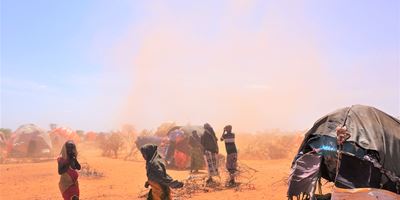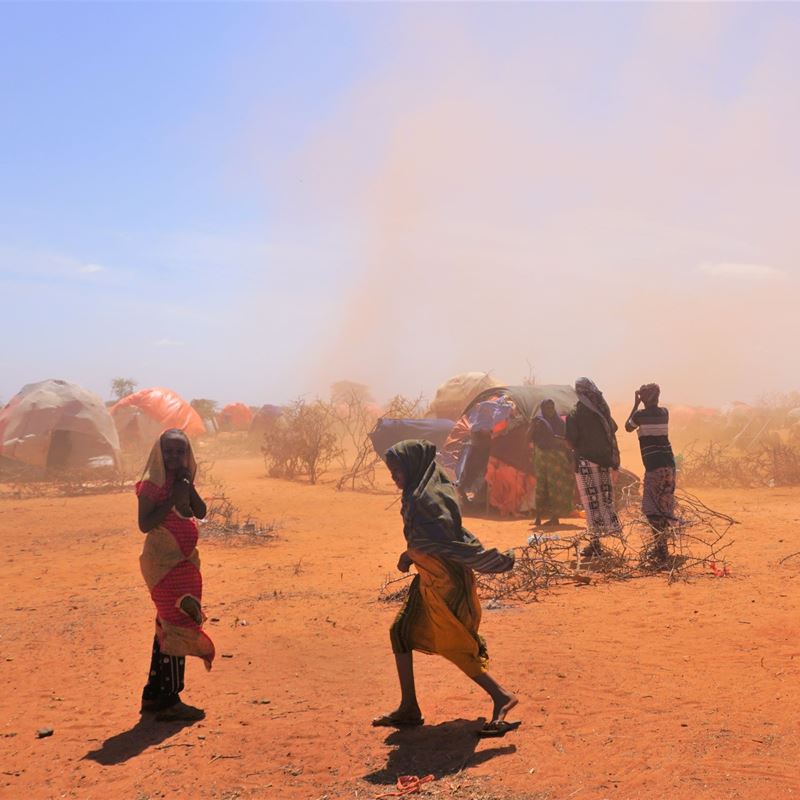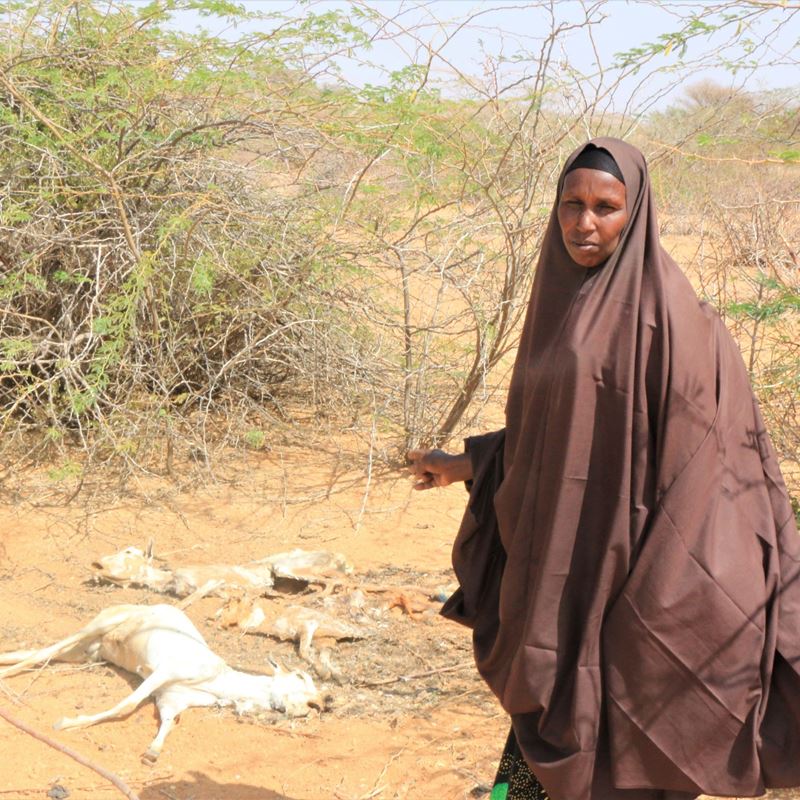
Record drought threatens the lives of millions in the Horn of Africa
Families in the Horn of Africa are currently suffering from the worst drought in 40 years. There is an urgent need to stem the threat of famine, which could have fatal consequences for millions of people.

Over 80% of Somalia is affected by drought and millions of people in the Horn of Africa are desperately searching for food and water. DRC Somalia
Four failed rainy seasons
An extreme and prolonged drought is currently ravaging Somalia and the rest of the Horn of Africa. The drought, the result of four failed rainy seasons, has caused severe water shortages and inflated food prices. It has pushed thousands of families into displacement. Now they are all in search of water, food and grass for their livestock, and up to 14 million people are starving.
In 2011, 37-year-old Amina and her five children had to flee extreme drought in Somalia's Hiraan region. Now, the family is again at risk of being forced to leave their home to find food and water to survive.
"I have lost everything in the past due to drought and I can't bear the thought of going through it again. But the drought has already killed some of our livestock that we depend on to survive. Our lives are in danger. We need help," says Amina.
Needs exceed funds
Audrey Crawford, DRC Country Manager for Somalia, is deeply concerned:
"We are working to scale up our efforts to reach the drought-affected population with food and water. But the drought is worsening day by day. And the needs are now so massive that they are outstripping our available resources to respond."
She adds:
"There is an increased vulnerability when people are displaced from their homes. In addition, the pressure on host communities' resources has the potential to trigger conflict and further displacement."

"The drought has already killed some of our livestock that we depend on for survival," says 37-year-old Amina. DRC Somalia
The drought is worsening day by day. The needs are now so massive that they are overtaking our available resources to respond.
Audrey Crawford, Country Manager DRC Somalia
Hunger has fatal consequences
While Somalia is the hardest hit, millions of families in Ethiopia, Djibouti and Kenya are also increasingly affected by the relentless drought. According to the UN Food Program, as many as 14 million people in the Horn of Africa are currently facing life-threatening food shortages.
And hunger has fatal consequences. A sharp increase in the number of deaths among malnourished children, mothers and the elderly has been reported.
DRC has almost 500 employees in the region. Every day, they witness families leaving their homes in large numbers in desperate search of grass and water for their livestock. Others sell their animals to buy food to survive in the here and now. But it's a long shot, as many are losing their only source of survival.
A massive crisis requires a massive response
DRC has been responding to the drought crisis since the beginning of 2021. Our response includes protection, securing water supplies, cash assistance, livestock feed, and shelter for the many drought-displaced people. At the same time, we continue to increase investments in sustainable livelihoods and longer-term resilience.
But with the increasing needs as a result of the drought, there is an urgent need for an increased response. This is emphasized by Karin Sørensen, Deputy Regional Director of DRC East Africa and Great Lakes:
"The current drought is one of the worst climate-induced emergencies ever seen in the region. It requires the international community to respond immediately and on a large scale to mitigate the worst consequences of the drought."